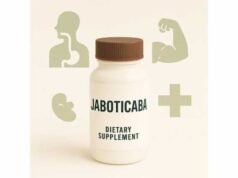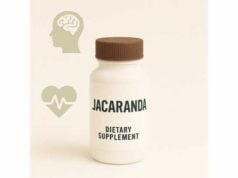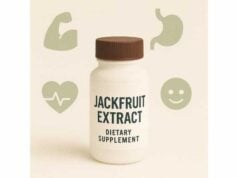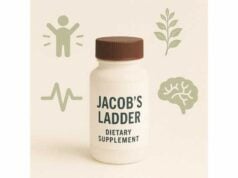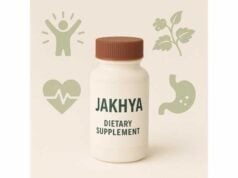
Jelly ear mushroom—most commonly referring to species in the genus Auricularia such as A. auricula-judae and the widely cultivated A. heimuer—is a firm, springy, ear-shaped fungus prized across East and Southeast Asia for its clean crunch and nutrition. You will see it sold as “wood ear,” “black fungus,” or “kikurage.” In kitchens, it brings texture to stir-fries, soups, and salads. In research, it draws attention for polysaccharides—long sugar chains that demonstrate antioxidant, antiplatelet, and gut-microbiota-modulating activity in preclinical models. People also value wood ear for its high fiber and mineral profile and its ability to stand up to simmering without getting slimy.
This guide keeps both sides in view: how to select, rehydrate, and cook jelly ears well—and what the science actually suggests about potential health effects. You will learn practical dosage ranges for culinary and supplemental forms, how to avoid common mistakes (like under-soaking or skipping a safety boil), and thoughtful precautions if you take blood thinners or have upcoming surgery. Throughout, the tone is people-first and evidence-aware, so you can enjoy wood ear as food while making informed choices about supplements.
Fast Facts
- Culinary use supports fiber intake; preclinical data suggest antioxidant and antiplatelet activity that may aid cardiovascular health.
- Typical culinary serving: 5–10 g dried (about 2–4 cups rehydrated), or 50–150 g fresh, with meals.
- Safety caveat: wood ear polysaccharides can inhibit platelet aggregation; take extra caution with anticoagulants or before surgery.
- Avoid if you have a bleeding disorder, are on dual antiplatelet/anticoagulant therapy, or cannot safely consume high-fiber foods.
Table of Contents
- What is jelly ear mushroom?
- What benefits are realistic and how might they work?
- How to use it right: selection, prep, and cooking
- How much to take and when?
- Side effects, interactions, and who should avoid it
- Buying guide, food safety, and storage
- Evidence snapshot and research gaps
What is jelly ear mushroom?
Jelly ear is the common name for several Auricularia species—ear-shaped, brown to black, and slightly translucent fungi that grow on dead or dying wood. The most widely cultivated and eaten species today is Auricularia heimuer, often labeled “black wood ear,” while Auricularia auricula-judae (“Jew’s ear”) is common in European woodlands and traditional texts. In markets, you will see them:
- Dried: thin, wrinkled pieces that expand dramatically when soaked.
- Fresh or par-cooked: glossy, crisp lobes, chilled or vacuum-packed.
- Powder or extract: for capsules, drink mixes, or fortified foods.
Texture and flavor. Wood ears are about texture first: a glass-noodle-like snap that survives stir-frying and simmering. Flavor is mild and adaptable; they soak up aromatics from the pan.
Nutrients and constituents. The standouts are dietary fiber (especially soluble fractions), polysaccharides (notably heteropolysaccharides with mannose, glucose, and glucuronic acid), modest protein, and minerals such as iron and potassium. The polysaccharides have drawn research interest for actions on oxidative stress, gut microbiota, and blood rheology in preclinical models.
Naming clarity matters. Labels may say A. auricula-judae, A. polytricha, or A. heimuer. All belong to Auricularia and are used similarly in kitchens. For supplements, matching the species and part (fruiting body) improves consistency across batches.
Culinary roles worldwide.
- East Asia: ramen topper “kikurage,” hot-and-sour soup, cold sesame salads.
- Southeast Asia: stir-fries with aromatics and greens; crunchy fillers in braises.
- Modern kitchens: fiber-boosting add-ins for grain bowls and noodle dishes.
Bottom line. Jelly ear is a versatile, high-fiber culinary mushroom with a unique chew and a growing research portfolio. Think of it as a food first; any health advantages are a bonus when used in balanced meals.
What benefits are realistic and how might they work?
Cardiometabolic support—preclinical but promising. Polysaccharides from Auricularia repeatedly show antioxidant and anti-inflammatory effects in chemical assays and animal models. In diet-induced obesity and fatty-liver models, supplementation has reduced weight gain trajectories, improved glucose tolerance, lowered triglycerides, and tempered liver inflammation. The most plausible mechanism threads through the gut microbiota: wood ear polysaccharides behave like prebiotic fibers, shifting microbial communities and short-chain fatty acid production in ways that can influence lipid metabolism and hepatic fat handling. That said, these are model-organism findings; meaningful human outcomes (e.g., lower LDL-C or ALT in well-designed trials) remain to be confirmed.
Antiplatelet and anticoagulant actions—mechanistic relevance. Auricularia extracts and purified polysaccharides have inhibited platelet aggregation in vitro, in ex vivo assays after oral dosing in animals, and—across edible fungi—in broader antiplatelet screening. Specific fractions also show antithrombin-mediated anticoagulant activity. Translationally, that suggests a potential for mild blood-thinning effects. For healthy adults eating typical culinary amounts, this is mostly academic; however, the signal is strong enough that people on anticoagulants or with bleeding risk should be cautious with concentrated extracts or very large portions.
Glycemic and lipid modulation—food matrix matters. Incorporating wood ear into staple foods (e.g., noodles) has improved post-prandial responses in small human food-format studies and modulated gut flora and lipids in animal work. In real-world eating, swapping part of a refined carbohydrate serving with high-fiber mushrooms is a reasonable strategy for steadier glucose and better satiety—even as we await robust clinical trials specific to Auricularia.
Immune tone and resilience—early-stage. Like other culinary mushrooms, wood ear polysaccharides can interact with pattern-recognition receptors and influence immune signaling cascades in vitro. It’s too early to claim immune “boosting”; a fair takeaway is that a diet richer in fungi-derived fibers may support a more balanced mucosal environment.
Digestive regularity and fullness. The blend of soluble and insoluble fiber supports stool bulk and transit. Some people appreciate the fullness wood ear adds to low-calorie soups or salads. As with any fiber-dense food, ramp up gradually and hydrate well to minimize gas.
What not to expect. Jelly ear is not a treatment for high cholesterol, fatty liver, diabetes, or clotting disorders. If you have a medical diagnosis, continue evidence-based care and discuss any supplement intake with your clinician.
Bottom line. The strongest, most practical benefits today come from fiber-forward culinary use. Preclinical findings on antiplatelet and metabolic pathways support thoughtful, moderate inclusion in meals while underscoring caution for people with bleeding risks.
How to use it right: selection, prep, and cooking
Choosing dried vs fresh.
- Dried wood ears are pantry-friendly, economical, and rehydrate to a large volume. Favor whole, unbroken pieces with a clean, woody smell and little dust.
- Fresh or chilled wood ears save time and offer a pristine snap. Choose glossy lobes without slime or sour odor.
Essential prep steps (dried).
- Rinse quickly to remove surface dust.
- Soak in plenty of cool water for 20–30 minutes (room temp) or 10–15 minutes (warm), changing water once if cloudy. Pieces should swell 3–4×.
- Trim any tough bases; slice into bite-size strips if desired.
- Safety boil: bring to a boil and simmer 3–5 minutes, then drain. This step improves texture, reduces microbial risk, and removes off-flavors.
- Pat dry before stir-frying to avoid spattering.
Flavor partnerships. Wood ear is a canvas for aromatics. It shines with:
- Aromatics: garlic, ginger, scallion, chilies.
- Acids: rice vinegar, citrus, black rice vinegar.
- Oils: sesame oil or chili-crisp added at the end for fragrance.
- Umami partners: soy sauce, dashi, mushrooms (shiitake), fermented tofu.
Quick applications (time-tested).
- Cucumber and wood ear salad: blanched slices tossed with garlic, vinegar, a splash of soy, and toasted sesame oil.
- Stir-fry: high heat, aromatics first, then vegetables and wood ear for the last 2–3 minutes—just to heat through while preserving crunch.
- Soup: add blanched strips in the final 5–7 minutes of simmering to retain texture.
- Grain bowls: sautéed wood ear with greens over rice or noodles for a fiber-rich lunch.
Supplement formats.
- Powdered fruiting body: mix into broths or smoothies; texture is neutral.
- Capsules/tablets: labeled as “wood ear,” “black fungus,” or Auricularia with an extract ratio (e.g., 10:1).
- Standardized polysaccharide extracts: marketed for cardiometabolic support; quality varies widely due to limited marker consensus.
Food-first guidance. Begin with culinary use for texture and fiber. Consider supplements only if you need predictable dosing or cannot cook regularly—and review the safety section if you use antiplatelet/anticoagulant medications.
How much to take and when?
Culinary servings (preferred).
- Dried wood ear: 5–10 g/day, rehydrated (about 2–4 loosely packed cups after soaking and slicing), with meals.
- Fresh wood ear: 50–150 g/day as part of soups, stir-fries, or salads.
- Frequency: 3–5 days per week fits most home cooking rhythms and comfortably boosts fiber intake.
Supplemental formats (if used).
- Powdered fruiting body: 1–3 g/day mixed into food or beverages.
- Concentrated extract (e.g., 10:1): 300–600 mg/day with meals.
- Polysaccharide-standardized products: follow the label; a 250–500 mg/day range is common. Because standardization varies, match brand transparency (species, part, extract ratio, and polysaccharide percentage) before deciding.
Timing for goals.
- Digestive comfort and fullness: include with meals rich in refined carbs or fats to increase satiety and reduce post-meal sluggishness.
- Metabolic support (experimental): consistent daily intake with main meals aligns with the way most studies deliver fiber-like polysaccharides.
Hydration and fiber harmony. Increase water intake when you add wood ear regularly; aim for 1–2 extra glasses daily. Combine with other fibers (vegetables, legumes, oats) for a balanced profile instead of relying on a single source.
Cycle and reassess. Use for 8–12 weeks in a routine food pattern and review how you feel (energy, digestion, satiety, cooking enjoyment). For supplements, take 2–4 weeks, then reassess with your clinician if you take medications that affect clotting or liver metabolism.
Who needs personalized dosing?
- People with bleeding risk or on anticoagulants/antiplatelets should keep portions modest and avoid high-dose extracts unless cleared by their prescriber.
- Those with GI sensitivity should start at the low end (e.g., 2–3 g dried) and increase slowly to reduce gas.
- Children: treat as a food ingredient in ordinary portions; avoid concentrated supplements without pediatric guidance.
When to stop or scale back. Reduce or pause if you notice easy bruising, prolonged bleeding from minor cuts, persistent bloating, or uncharacteristic GI discomfort—then discuss with a clinician.
Side effects, interactions, and who should avoid it
General tolerability. As a culinary ingredient, jelly ear is well tolerated. Most people experience no side effects when it is cooked thoroughly and eaten in customary portions. The most common issue is transient gas if fiber intake jumps suddenly.
Potential adverse effects (usually mild and manageable).
- Gastrointestinal: bloating or loose stools if large amounts are eaten without adequate water or if you leap from zero to daily high portions.
- Allergy: rare; discontinue if you notice hives, itching, swelling, or breathing difficulty.
- Bleeding tendency: concentrated extracts or unusually large servings could potentiate antiplatelet/anticoagulant effects given wood ear’s antiplatelet signal in laboratory and animal models.
Medication and condition cautions.
- Anticoagulants/antiplatelets (e.g., warfarin, apixaban, clopidogrel, aspirin): consider smaller, consistent culinary servings; avoid high-dose extracts unless your prescriber agrees. Monitor for easy bruising or nosebleeds and report changes promptly.
- Pre-/post-surgical: pause nonessential supplements—including Auricularia extracts—7–14 days before procedures, per your surgeon’s advice. Culinary portions can usually continue unless directed otherwise.
- Hypoglycemics: while human data are limited, incremental fiber can affect post-prandial glucose; monitor if your regimen is tightly titrated.
- GI disorders: in active inflammatory bowel flares or strictures, high-fiber textures may aggravate symptoms; discuss individualized plans with your GI team.
Food safety caveat. Dried wood ear has been implicated in a Salmonella outbreak when supplied to restaurants and improperly handled. This is a storage and handling issue—not an inherent toxin—but it underscores the value of reputable sourcing and the safety boil step after soaking.
Who should avoid or seek medical guidance first.
- Individuals with bleeding disorders or on dual antiplatelet/anticoagulant therapy.
- People scheduled for surgery or invasive dental procedures.
- Those with severe GI disease or a history of foodborne infections who require stricter food safety protocols.
- Infants and very young children (choking hazard from springy texture; keep pieces very small if served at all).
Smart risk reduction.
- Cook thoroughly; avoid raw or under-rehydrated pieces.
- Keep portions consistent day to day if you take medications that affect clotting.
- Introduce one new supplement at a time and keep a simple log of dose, timing, and any symptoms.
Buying guide, food safety, and storage
Label literacy. Look for the Latin name (Auricularia sp.), the plant part (fruiting body), and country of origin. For extracts, prefer labels that specify an extract ratio (e.g., 10:1) and the polysaccharide percentage or a clear analytical marker.
Quality signals.
- Reputable vendors: steady turnover, mycology expertise, responsive customer service.
- Clean packaging: intact seals; low dust inside bags; absence of musty or sour odors.
- Transparency: batch numbers, certificates of analysis upon request (identity, microbes, heavy metals).
Food safety practices (especially for dried wood ear).
- Soak properly, then boil 3–5 minutes before cooking.
- Use potable water and clean utensils; avoid cross-contamination with raw meats.
- Store dried mushrooms airtight in a cool, dark cupboard; refrigerate fresh wood ear and use within 3–5 days.
- After soaking, refrigerate leftovers and use within 24 hours. Do not leave soaked mushrooms at room temperature.
Storage tips that preserve texture.
- Keep a small jar of pre-soaked, blanched strips in the fridge (covered, lightly salted) for next-day salads and quick stir-fries.
- For long-term storage, dried wood ear keeps its quality for up to 1–2 years if sealed well and protected from humidity.
Sustainability note. Auricularia cultivation is efficient: it grows on agricultural by-products (e.g., sawdust, corncobs), making it a sensible choice for eco-aware cooks. Favor producers who disclose substrate and farming practices.
Simple kitchen math.
- 1 cup dried pieces ≈ 20–25 g and yields 4–6 cups rehydrated strips.
- 5 g dried (a small handful) is enough for 2–3 servings when mixed into soups or salads.
Evidence snapshot and research gaps
What is well-supported today.
- Polysaccharide-rich extracts yield antioxidant and anti-inflammatory effects in vitro and in vivo (animal models).
- Antiplatelet/anticoagulant activity has been demonstrated with hot-water extracts and purified polysaccharides across several experimental systems.
- Metabolic modulation—including improved glucose tolerance, lipid profiles, and reduced hepatic fat accumulation—appears across multiple rodent studies using dietary supplementation with Auricularia polysaccharides.
- Human food-format work (e.g., adding wood ear to staple foods) shows plausible benefits for post-prandial response and nutrient enrichment, though trials remain small and heterogeneous.
Where evidence is still thin.
- Randomized controlled trials in humans targeting lipids, glycemic control, or clinical endpoints (e.g., platelet function tests) are limited. We need dose-finding studies that separate whole-food effects from concentrated extracts.
- Standardization is variable. Different species (A. heimuer vs A. auricula-judae), extraction methods, and polysaccharide profiles complicate comparisons and dosing generalizations.
- Long-term safety of high-dose polysaccharide extracts has not been established; culinary safety is excellent when products are cooked and handled properly.
- Mechanistic clarity in humans—especially the interplay between Auricularia polysaccharides, gut microbes, bile acids, and coagulation pathways—deserves rigorous translational work.
Practical synthesis. Enjoy jelly ear primarily as food for fiber, mineral variety, and culinary pleasure. If you explore supplements, select transparent products, use modest doses with meals, and involve your clinician—particularly if you take medications that affect clotting or glucose control. The research trajectory is encouraging, and high-quality human trials are the logical next step.
References
- The Current State and Future Prospects of Auricularia auricula’s Polysaccharide Processing Technology Portfolio 2023 (Systematic Review)
- Auricularia auricula polysaccharides attenuate obesity in mice through gut commensal Papillibacter cinnamivorans 2023 (Preclinical Study)
- The nontoxic mushroom Auricularia auricula contains a polysaccharide with anticoagulant activity mediated by antithrombin 2003 (Mechanistic Study)
- The Effect of Mushroom Extracts on Human Platelet and Coagulation Activity 2019 (In Vitro Screening)
- Outbreak of Salmonella Stanley Infections Linked to Wood Ear Mushrooms 2020 (Public Health Advisory)
Disclaimer
This article is informational and does not replace personalized medical advice, diagnosis, or treatment. Jelly ear mushrooms are safe as cooked foods for most people, but concentrated Auricularia extracts and very large portions may influence blood clotting and interact with medications. If you have a bleeding disorder, take anticoagulants or antiplatelets, manage diabetes, have gastrointestinal disease, or are preparing for surgery, consult a qualified healthcare professional before using supplements or changing your diet.
If you found this guide useful, please consider sharing it on Facebook, X (formerly Twitter), or any platform you prefer, and follow us for future evidence-based updates. Your support helps us keep producing careful, balanced resources.

